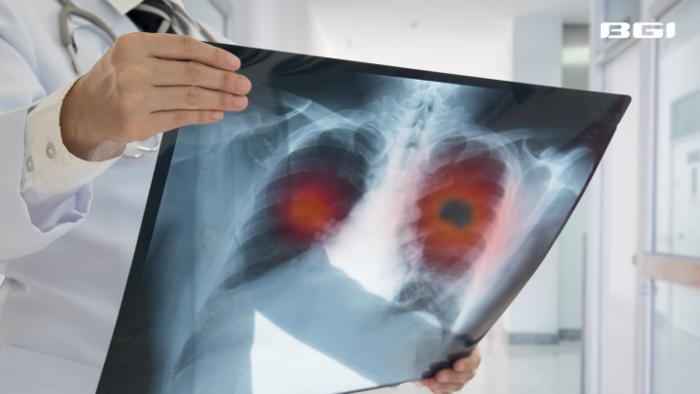
In the rapidly evolving landscape of infectious disease diagnostics, a groundbreaking study has illuminated the immense potential of Metagenomic Next-Generation Sequencing (mNGS) in revolutionizing the detection and management of pulmonary infections. Leveraging cutting-edge genomic technology, researchers from the Second Affiliated Hospital of Nanchang University in collaboration with BGI Genomics have provided compelling evidence that mNGS dramatically elevates pathogen detection capabilities beyond those of conventional microbiological tests (CMTs). Published in Frontiers in Cellular and Infection Microbiology in early May 2025, the study delineates how mNGS not only accelerates diagnostic timelines but also empowers clinicians with comprehensive data to engineer precision treatment strategies.
Traditional diagnostic methodologies such as culture growth, microscopy, and targeted polymerase chain reaction (PCR) assays have long formed the backbone of pulmonary pathogen identification. Despite their established roles, these conventional microbiological tests are inherently restricted by their dependence on the prior assumption of the suspected pathogen, culture viability, and limited organism coverage. Consequently, they often fail to detect elusive or atypical pathogens, leaving critical gaps in clinical decision-making. The new findings underscore that mNGS transcends these limitations by employing unbiased, high-throughput sequencing to capture a wide spectrum of microbial DNA and RNA directly from clinical specimens, facilitating robust and rapid pathogen discovery.
Statistically, mNGS demonstrated an unprecedented pathogen detection rate of 86% in the studied cohort, a striking improvement compared to the 67% identification rate observed with traditional CMTs. Beyond sheer detection frequency, the breadth of mNGS is particularly noteworthy. Where CMTs could identify only 28 unique pathogens, mNGS successfully detected a remarkable 95 distinct pathogens encompassing bacteria, fungi, viruses, and specialized organisms. This expansive microbial coverage equips clinicians with a panoramic view of the infectious landscape within the pulmonary milieu, a feature imperative for diagnosing polymicrobial infections frequently encountered in immunocompromised or critically ill patients.
Central to the utility of mNGS is its proficiency in unveiling atypical and fastidious organisms that routinely evade traditional diagnostic techniques. Notable among these are Mycobacterium tuberculosis, infamous for its slow-growing characteristics; Mycoplasma pneumoniae and Chlamydia psittaci, obligate intracellular bacteria challenging to culture; as well as fungal pathogens like Pneumocystis jirovecii and Talaromyces marneffei. The ability to detect such pathogens swiftly and accurately is transformative, as delayed or missed diagnoses often result in suboptimal therapy and worsened patient outcomes.
The clinical implications of integrating mNGS into routine diagnostics are profound. The study highlighted that therapeutic regimens could be adjusted based on mNGS results in 133 patients, with approximately 40.6% of these cases benefiting from more targeted antimicrobial interventions. This tailored approach not only enhances treatment efficacy and reduces unnecessary broad-spectrum antibiotic use but also plays a pivotal role in combating the global threat of antimicrobial resistance. Although the study notes a singular instance of antibiotic overuse linked to mNGS-guided decisions, the overall therapeutic optimization underscores the method’s reliability and clinical value.
mNGS also introduces a paradigm shift in the temporal dynamics of pulmonary infection diagnosis. Traditional cultures require days to weeks to yield definitive results, whereas mNGS can deliver comprehensive microbial identification within a significantly compressed timeframe of a few days. This rapid turnaround is paramount in acute clinical settings, where timely initiation of appropriate therapy can be the difference between recovery and severe complications or mortality.
From a technical standpoint, mNGS employs shotgun sequencing methodologies to survey all nucleic acids present in a sample without preconceived target biases. Subsequent bioinformatics pipelines deconvolute the intermixed genetic material, discriminating pathogen sequences from host DNA and environmental contaminants. This unbiased metagenomic strategy permits simultaneous identification of co-infecting pathogens and even detection of novel or unexpected microorganisms, thereby broadening the clinician’s diagnostic arsenal remarkably.
The study’s authors advocate for an integrative diagnostic model wherein mNGS is complemented by traditional clinical assessments, imaging modalities, and microbiological testing. Such multidimensional analysis promises a holistic and dynamic monitoring framework exemplified by rapid pathogen identification, precise intervention planning, and longitudinal therapeutic evaluation. Professor Wang Xiaozhong, lead author and clinical laboratory director, envisions this collaborative approach as a vanguard for personalized medicine that tailors antimicrobial therapy precisely to the infectious etiology and patient-specific factors.
Moreover, the impact of mNGS extends beyond individual patient care, offering substantial benefits for public health surveillance and epidemiological tracking of respiratory infections. The method’s capacity to detect emerging pathogens and variants in near real-time can inform outbreak responses and guide vaccine development strategies, thus fortifying the global infectious disease defense infrastructure.
Despite its advantages, mNGS is not devoid of challenges. The technology’s cost, the need for specialized bioinformatics infrastructure, and the interpretation of complex datasets necessitate continued refinement and standardization before widespread clinical adoption. However, ongoing advancements in sequencing platforms, decreasing costs, and enhanced computational tools are rapidly mitigating these hurdles, suggesting a promising future for mNGS-guided diagnostics.
In conclusion, this seminal investigation unequivocally positions metagenomic next-generation sequencing at the forefront of pulmonary pathogen diagnostics. By amplifying detection sensitivity, expanding pathogen breadth, and expediting result delivery, mNGS empowers clinicians with unparalleled insights that translate into superior patient outcomes. Its integration into clinical workflows represents a monumental leap towards precision medicine, heralding a future where infectious diseases can be diagnosed and managed with unprecedented accuracy and agility.
Subject of Research: Pulmonary infections and pathogen detection using metagenomic next-generation sequencing
Article Title: Application of metagenomic next-generation sequencing in pathogen detection of lung infections
News Publication Date: 1-May-2025
Web References: http://dx.doi.org/10.3389/fcimb.2025.1513603
Image Credits: BGI Genomics
Keywords: Infectious diseases, Respiratory system, Lungs, Bacteria, Next generation sequencing, Microbiology, Bacteriology, Fungi, Mycology, Pathogens, Viruses, Bacterial pathogens, Fungal pathogens, Antibiotics, Public health
Tags: clinical decision-making in infectious diseasescomprehensive pathogen identificationDNA testing for lung pathogensgenomic technology in medicinehigh-throughput sequencing benefitsinfectious disease diagnostics advancementsinnovative approaches to pulmonary diagnosticsmetagenomic next-generation sequencingmNGS in pulmonary infectionspathogen detection technologyprecision treatment strategies for lung infectionstraditional microbiological tests limitations





